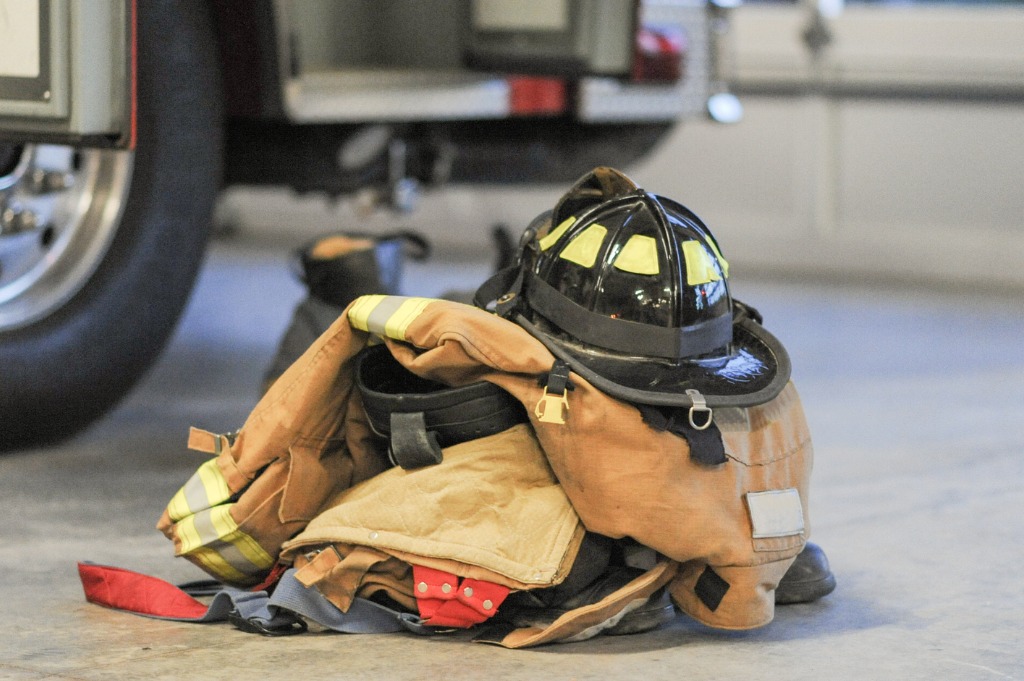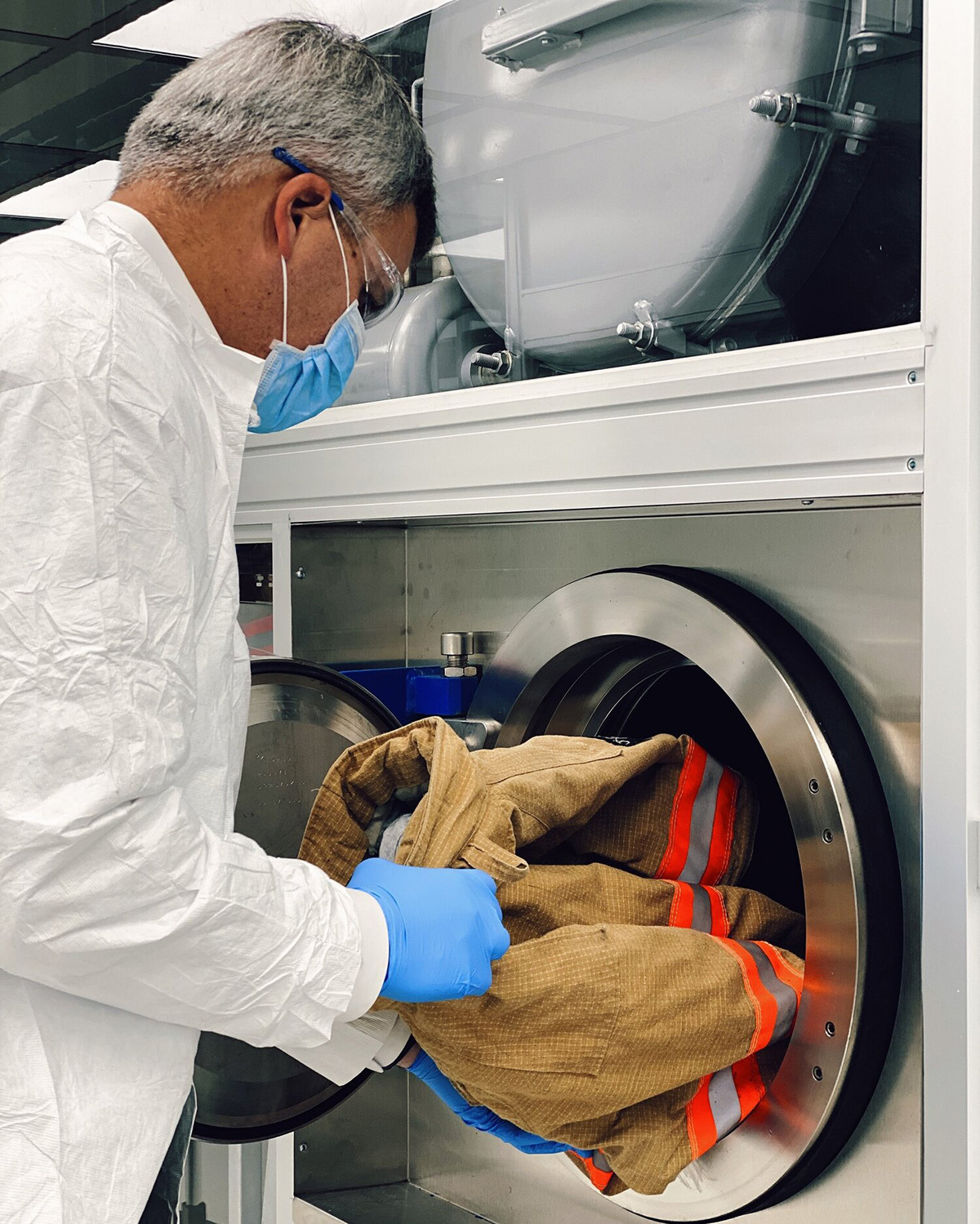By: Emergency Technical Decon Team
Maintaining clean turnout gear is of utmost importance for the safety and well-being of firefighters. This begs the question, “how often should turnout gear be washed?” We’ll explore updated guidelines provided by NFPA 1851 and highlight the importance of regular cleaning in minimizing health risks, particularly regarding the correlation to cancer. Ready to learn more about professional cleaning services and the benefits of CO2 cleaning for maintaining turnout gear? Let’s get into it.
How often should you wash your turnout gear?
To ensure optimal performance and reduce potential contamination risks, turnout gear should be washed after every exposure to fire or smoke. This prompt cleaning is essential as it removes soot, debris, and other contaminants that can compromise the gear’s protective properties. According to NFPA 1851 guidelines, it is recommended to have your gear go through advanced cleaning and inspection by a verified ISP (Independent Service Provider) every six months. This comprehensive cleaning schedule ensures that any hidden or accumulated contaminants are effectively removed and that the gear is thoroughly inspected for any signs of damage or wear. By adhering to this cleaning regimen, firefighters can maintain the longevity and integrity of their turnout gear, ensuring its readiness for future operations.
Updates to NFPA 1851
NFPA 1851 is a standard put into place to establish basic requirements for the selection, care, and maintenance of firefighter protective gear. Ultimately, this standard helps reduce health and safety risks that stem from gear that is not properly maintained. Without proper cleaning, gear becomes contaminated and damaged making it increasingly dangerous to use.
In 2020, NFPA 1851 introduced important updates that emphasize the need for more frequent advanced cleanings. The revised guidelines now require two advanced cleanings per year instead of one. This change reflects the growing awareness of the health risks associated with firefighter exposure to products of combustion. By increasing the frequency of advanced cleanings, firefighters can significantly reduce the potential for contamination and ensure their gear remains in peak condition for maximum protection. These updates also highlight the importance of staying up to date with the latest NFPA standards to ensure the highest level of safety and compliance in the fire service.
Why it’s important to keep your turnout gear clean
Regular cleaning of turnout gear is of paramount importance to minimize health hazards for firefighters. During firefighting operations, firefighters are exposed to a wide range of dangerous chemicals, toxins, and carcinogens. These substances can adhere to the surfaces of their gear, posing a significant risk if not properly cleaned. Failure to clean the gear promptly and effectively increases the risk of prolonged exposure to these harmful substances, which may lead to serious health issues, including respiratory problems, skin irritations, and cancer.
The correlation between dirty gear and increased cancer risks has been a growing concern in the firefighting community. Studies have shown that contaminated gear can harbor carcinogens, such as polycyclic aromatic hydrocarbons (PAHs) and volatile organic compounds (VOCs). Prolonged exposure to these substances can have detrimental effects on firefighters’ long-term health.
By maintaining clean gear, firefighters can mitigate these risks and prioritize their well-being. Regular washing removes contaminants and reduces the buildup of hazardous substances on the gear’s surface. It also ensures that the gear functions optimally by preserving its thermal protection and moisture barrier properties. Clean gear promotes better overall hygiene and prevents cross-contamination between incidents.
Turnout gear cleaning services and their benefits
To ensure thorough and effective cleaning, it is advisable to utilize professional cleaning services that specialize in turnout gear. These services possess the expertise and advanced technologies required to properly clean and decontaminate gear. One such method is CO2 cleaning, which utilizes pressurized carbon dioxide to remove contaminants without causing damage to the gear’s protective properties.
CO2 cleaning offers several benefits for cleaning turnout gear. The method is non-toxic and environmentally friendly, avoiding the use of harsh chemicals and ensuring the gear’s integrity is maintained. The pressurized CO2 effectively dislodges particles and contaminants from the gear’s surface, providing a deep and thorough cleaning. Furthermore, CO2 cleaning is gentle on the gear, minimizing wear and tear that can occur with other cleaning methods.
Professional cleaning services, like ETD, adhere to NFPA 1851 standards and provide comprehensive cleaning solutions for firefighters. These services employ trained technicians who have a deep understanding of the unique requirements of turnout gear cleaning. They follow strict protocols to ensure that gear is thoroughly inspected, cleaned, and decontaminated. Additionally, they can address any repairs or replacements necessary to maintain gear functionality and safety.
Proper maintenance and cleaning of turnout gear are essential for the safety and health of firefighters. Regular cleaning after each exposure to fire or smoke, along with scheduled advanced cleanings, reduces contamination risks and safeguards firefighters’ well-being. By utilizing professional cleaning services and embracing methods like CO2 cleaning, firefighters can ensure the longevity and effectiveness of their turnout gear. Prioritizing cleanliness is a crucial aspect of overall health and safety in firefighting.
Reach out to our team today to learn more about ETD’s solution and request service.



